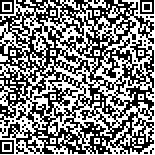下载中心
优秀审稿专家
优秀论文
相关链接
摘要

随着航天技术的发展和新型微波载荷的发射(如3维成像高度计),越来越多的小入射角海洋观测雷达将投入运行,如何有效地利用这些小入射角的后向散射数据成为研究的热点课题。利用TRMM (Tropical Rainfall Measuring Mission)的PR (Precipitation Radar)后向散射系数NRCS (Normalized Radar Cross Section)数据对小入射角情况下的海面风速反演方法和风速反演精度进行研究,并对风速反演性能进行统计分析。基于无雨条件下的PR海面后向散射数据,建立小入射角情况下的风速反演算法和经验的GMF模型。风速反演结果分别与浮标、ASCAT进行交叉比对。结果表明:反演风速的偏差小于0.28 m/s,标准差小于1.51 m/s;在中等风速条件下,反演风速的偏差和标准差均小于低风速条件和高风速条件;0°—8°入射角范围内的风速反演精度明显优于8°—12°入射角范围的风速反演精度。
As the development of space technology and the launch of new type microwave payloads, such as imaging microwave altimeter, more and more radars that observe the ocean at low incident will be in orbit, such as the Precipitation Radar (PR) (incident angle: 0°—18°) on Tropical Rainfall Measuring Mission (TRMM) satellite, the Imaging ALTimeter (IALT) (incident angle: 1°—7°) on the TG-2 space station which is lunched on September 15, 2016, and the Surface Ware Investigation and Monitoring (SWIM) (incident angle: 0°—10°) on China France Oceanography Satellite which is scheduled to launch in 2018. How to make use of the Normalized Radar Cross Section (NRCS) at low incident angle effectively is a very hot topic. Can the NRCS at low incident angle be used for wind speed inversion? This is also the motivation of our research.
This paper uses the PR data on TRMM to research the sea surface wind speed inversion method and analyze the inversion accuracy. In this paper, the empirical Geophysical Model Function (GMF) model is established by crossing the PRNRCS with the QuikScat wind speed, and the GMF Table is given out in section 2. The Maximum Likelihood Estimation (MLE) method is used for PR wind speed inversion, and the objective function of MLE is provided in section 3. At last, the retrieved wind speeds are compared with the buoy and advanced scatterometer (ASCAT) wind speed. The performance of MLE method and the wind speed inversion accuracy are analyzed.
By the performance analysis, we find that the bias and standard deviation of retrieved wind speed is smaller than 0.28 m/s and 1.51 m/s respectively. Moreover, the wind speed retrieval performances versus wind speed and incident angle are analyzed. The wind speed retrieval performance at medium wind speed is better than that at low and high wind speed. The inversion accuracy with 0°—8° incident angles is better than that with 8°—12° incident angles.
From the results of this paper we can concluded that the NRCS at low incident angle can be used for wind speed retrieval. And the wind speed retrieval accuracy is even higher than that of scatterometer (typically 2 m/s). Thus, for the radars that operate near nadir, such as the IALT and the SWIM on China France Oceanography Satellite, we can offer the product of wind speed.

